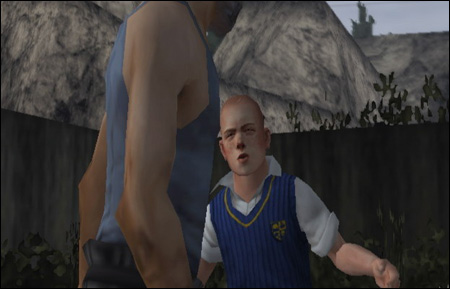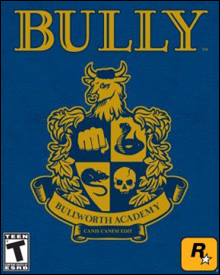
“COLUMBINE SIMULATOR”?: Not a chance — in fact, Bully is not only subtle but damn fun.
|
Ever since Rockstar Games announced it was making Bully, the controversial publisher has been the target of even more criticism than usual. Anti-bullying groups in this country and in Europe have decried the idea of a game that glorifies schoolyard violence. Jack Thompson, a Florida lawyer who’s one of the most prominent anti-video-game crusaders, has called the game nothing less than a “Columbine simulator.” I happen to agree that the game they’re describing sounds terrible, and inappropriate for kids of any age. But that game doesn’t exist. Bully, the game that Rockstar actually made and that none of these concerned citizens had played before they launched their PR blitzes, is far more subtle and shrewd than its critics could have imagined. It’s also damn fun.
Make no mistake, there’s plenty of bullying in the game, but context is everything. You play as Jimmy Hopkins, a loner whose parents dump him at the crumbling Bullworth Academy. Jimmy has been kicked out of five schools; the Bullworth headmaster promises to set him straight. It’s clear from the outset that the institution is rotten. Fights break out constantly, the teachers are distant, and what order exists is enforced by upper-class prefects resembling shock troops. The usual cliques are present and accounted for — jocks, preppies, greasers, nerds — and Jimmy doesn’t fit in anywhere. Neither does he want to.
Bully works because it aims its sights not at the weak, which it would if it were a celebration of bullying, but at the strong. In classic anti-hero fashion, Jimmy isn’t motivated as much by concern for the downtrodden as by contempt for those who abuse their power. He’ll help a nerd out, but only for a price. It’s when he sees injustice that he’s motivated to act. As he says to one hulking jock after fighting him into submission: “There’s a bunch of kids around here who deserve a beating, and you’re picking on the few who don’t.” That philosophy drives the whole game.
ADVERTISEMENT
 |

HOT TIP: Kissing bonuses don’t necessarily have to come from girls.
|
The gameplay shares much with Rockstar’s Grand Theft Auto. In an expansive world map (which starts at Bullworth’s campus and later grows to include the surrounding town), Jimmy accepts missions that pit one clique against another. Each faction is depicted as cartoonishly as the warring ethnic gangs in GTA, and the mission objectives are superficially similar. Sometimes you need to protect a nerd; sometimes you need to put the hurt on a bully. There’s a good mix of action-based missions, stealth missions, and missions that require you to beat the clock. Bully’s gameplay is more tightly focused than GTA’s, however. The addition of a game clock and an academic schedule helps in this regard. You can skip class, but prefects and cops are on the lookout for truants. (Each class is represented by a different mini-game, and passing gives you status upgrades.) The passage of time is more cleverly marked, as seasonal decorations appear and disappear from Bullworth’s halls from one chapter to the next.
There’s one further crucial difference between the two franchises. The more nihilistic Grand Theft Auto seems to accept corruption and criminality as the natural state of things. Bully is more hopeful. Every person in power at Bullworth Academy — from the administration to the prefects to the heads of cliques — is devoted to preserving his position at everyone else’s expense. Jimmy Hopkins challenges the authoritarian status quo. Maybe that’s what the so-called family-values warriors are really so concerned about.